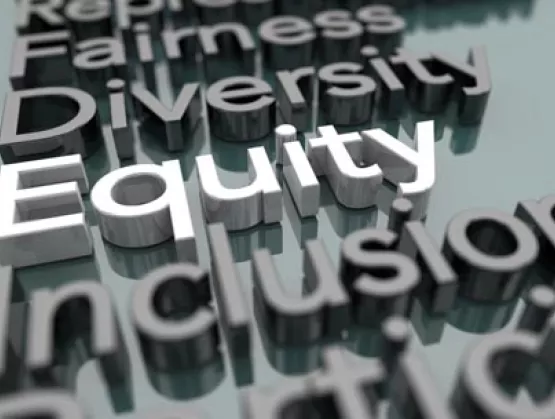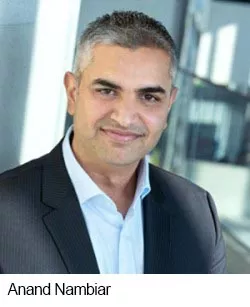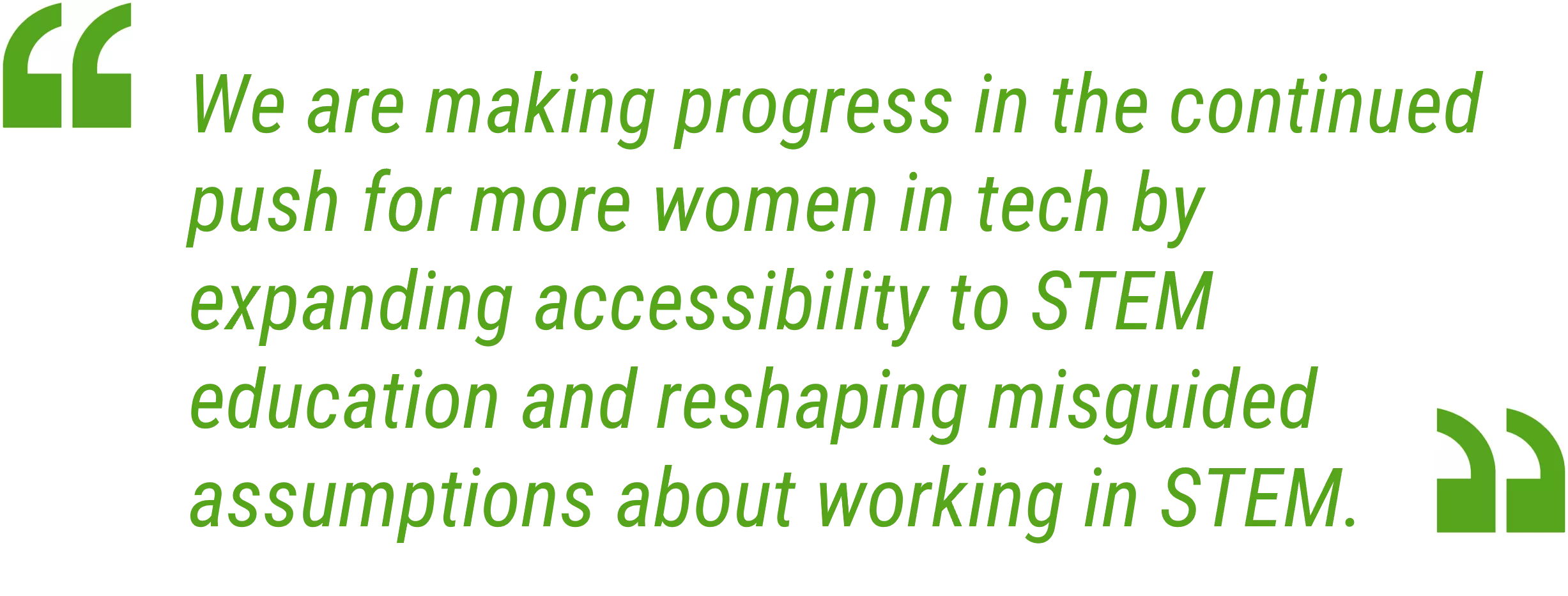
Engaging with employees, understanding their concerns and recognizing their achievements are vital to developing strategic diversity, equity and inclusion (DE&I) plans and maintaining a company culture that prizes inclusion. But for companies looking to sharpen their competitive edge in international markets, DE&I can also be key driver of business success.
SEMI spoke with Anand Nambiar, Executive Vice President of Semiconductor Materials at the Electronics business of Merck KGaA, Darmstadt, Germany, which operates its U.S. and Canada business as EMD Electronics, about managing DE&I across cultures and geographies. Nambiar shared his views about the critical importance of DE&I, the complex social interactions involved, and how the company educates employees about DE&I and its value in meeting day-to-day objectives and deliverables.
SEMI: Can you tell us a bit about your role at Merck KGaA, Darmstadt, Germany?
Anand: I joined Merck KGaA, Darmstadt, Germany in 2014 following the integration of AZ Electronic Materials, where I had served as Managing Director of the Optronics Division and was based in Hong Kong. From the get-go of my vibrant journey at this company, I relocated to Mumbai to lead our companies’ Healthcare business in India.
 Today, I serve as the Executive Vice President of our Semiconductor Materials Business Unit, where we work to push the boundaries of science and technology to enable high-tech materials and solutions that are advancing digital living everywhere. I am now based in San Jose, California, after working in our headquarters in Darmstadt, Germany, for three years. I am constantly collaborating and innovating with colleagues around the world and enjoy experiencing different cultures, diversity of thoughts, inclusivity of people with various backgrounds, habits and ways of life.
Today, I serve as the Executive Vice President of our Semiconductor Materials Business Unit, where we work to push the boundaries of science and technology to enable high-tech materials and solutions that are advancing digital living everywhere. I am now based in San Jose, California, after working in our headquarters in Darmstadt, Germany, for three years. I am constantly collaborating and innovating with colleagues around the world and enjoy experiencing different cultures, diversity of thoughts, inclusivity of people with various backgrounds, habits and ways of life.
SEMI: When did your commitment in diversity start? What were the main challenges you faced personally or observed?
Anand: I’ve always been personally immersed in diversity and witnessed its benefits, and so my commitment to organizational DE&I is longstanding. A particularly influential experience was my time in India, where the variety of cultures and languages pushed me to think about DE&I in a more dedicated way. The diversity in India can be likened to that of Europe; within India there are many different provinces, each with its own character and flair. We had to understand how to access each nuanced market and what each customer’s needs were – their pain points, the do’s and don’ts.
This applies to the semiconductor industry as well. We have customers scattered around the world, each with their own objectives and preferences. And the practice of ensuring each customer’s voice is truly heard is central to the spirit of DE&I. It can be difficult to serve the diverse base of semiconductor customers and meet their needs if your internal team is homogenous. That is why I am passionate about increasing diversity of thought and backgrounds on the team.
 In addition, the current semiconductor market is facing a severe issue of talent shortage. With the industry booming, and companies expanding their scales and footprints, the demand for talent increases too. However, a recent report indicated that the industry is facing a manpower shortage of 100,000 people. Lacking talent to fuel growth and innovation can seriously jeopardize the future of semiconductor industry.
In addition, the current semiconductor market is facing a severe issue of talent shortage. With the industry booming, and companies expanding their scales and footprints, the demand for talent increases too. However, a recent report indicated that the industry is facing a manpower shortage of 100,000 people. Lacking talent to fuel growth and innovation can seriously jeopardize the future of semiconductor industry.
We have just recently announced our ambitious plan to invest 3 billion Euro in leveling up our global capacity and innovation to meet the growth plans of our customers.
Our approach to embracing a rich mix of diversity, from gender identity to generational diversity and beyond, will allow us to expand our talent pool and enable employees to thrive in an inclusive organization. This is vital since it is the uniqueness of our people that brings science, curiosity, and our high-impact culture to life.
SEMI: Why are organizations still facing so many challenges when it comes to DE&I initiatives?
Anand: While a majority can agree that DE&I is important and necessary, many are less confident about exactly how to implement DE&I in the workplace. The rose and thorn of DE&I is that each person is beautifully complicated. Our knowledge and experiences are not linear and our potential to innovate is limitless – these are clear strengths. The challenge comes in designing and rolling out company-wide initiatives tailored to resonate with each employee. At a global company like ours, how we can improve internal DE&I looks very different team to team. However, it’s the name of the game for DE&I to have multiple dimensions.
 It is still a no-brainer that we invest our time and effort to tap into employee strengths in each dimension and enable our people to perform at their best. Another aspect is that often the wins in DE&I are felt, and therefore invisible to traditional metrics of success. DE&I initiatives are essentially culture transformations, and we need to adapt how we track such results. Though we always talk about supersonic speed in semiconductors, reaping the benefits of DE&I is more of a slow and steady simmer – we need to keep the fire going.
It is still a no-brainer that we invest our time and effort to tap into employee strengths in each dimension and enable our people to perform at their best. Another aspect is that often the wins in DE&I are felt, and therefore invisible to traditional metrics of success. DE&I initiatives are essentially culture transformations, and we need to adapt how we track such results. Though we always talk about supersonic speed in semiconductors, reaping the benefits of DE&I is more of a slow and steady simmer – we need to keep the fire going.
SEMI: How does your organization educate employees about DE&I and integrate the shared understanding in day-to-day objectives and deliverables?
Anand: As I alluded to in my previous point, our company knows diversity drives progress and that it contributes significantly to our success in science and technology. We strive to create a global environment of inclusion and inspiration in all areas of our business because our commitment to diversity begins with our people and extends to the patients and customers we serve every day.
As a science and technology company, it made sense for us to raise awareness by taking a neuroscientific approach to DE&I, which inspired our Brain@Work internal training program that we launched last September. This series of video podcasts uses basic neuroscientific frameworks to explain our behaviors and decisions, from uncertainty reduction to prediction error and ingroup-outgroup dynamics. Our goal is to equip our employees to make proactive changes to meaningfully drive productivity and creativity of teams and individuals.
SEMI: How would you describe your organization’s goals and ambitions in the field of DE&I??
Anand: We are driven by a shared mission to find solutions to some of today’s toughest problems. The bottom line of our DE&I priorities is to build a culture of belonging that empowers everyone to bring their curiosity to life. We have divided this goal into three clear commitments in inclusion: gender equity, culture and ethnicity.
 Our DE&I KPIs through 2030, which were announced last year, are focused on rolling out programs on how to lead more inclusively to all leaders over the coming years in order to increase from 35% women in leadership positions today to reach gender parity. We plan to increase the global share of Asian, Latin American, Middle Eastern and African leaders from 16% to 30% and the share of underrepresented racial and ethnic groups in U.S. leadership positions from 20% to 30%. The way we aim to achieve this is to integrate DE&I into our work through a separate set of goals for our businesses, countries, and the entire organization.
Our DE&I KPIs through 2030, which were announced last year, are focused on rolling out programs on how to lead more inclusively to all leaders over the coming years in order to increase from 35% women in leadership positions today to reach gender parity. We plan to increase the global share of Asian, Latin American, Middle Eastern and African leaders from 16% to 30% and the share of underrepresented racial and ethnic groups in U.S. leadership positions from 20% to 30%. The way we aim to achieve this is to integrate DE&I into our work through a separate set of goals for our businesses, countries, and the entire organization.
SEMI: How do your employees engage in and drive the many facets of DE&I?
Anand: Amongst our operations across 66 countries, we support around 50 employee networks, each with different focuses including international communities, women in leadership, LGBTQI+, ethnicity and race, and differently abled groups. Our Healthcare colleagues have launched a resource group called Embracing Carers that focuses on improving caregivers’ health and wellness, while increasing awareness and support for them within healthcare systems worldwide. These global and local networks operate with significant autonomy to promote campaigns across sectors and borders.
A couple of examples are that our I’m Able Network hosted an educational talk about disability etiquette and invisible disabilities such as mental health, chronic illness, and neurodiversity; and our Rainbow Network drives company-wide Pride Month activities each year. Engaging our employees and practicing active listening is key to fulfilling the potential of a diverse organization.
SEMI: A continued commitment to promoting diversity, inclusion, and equal opportunity is critical to attract and retain talent with the mix of skills and expertise needed to maximize organizational effectiveness. Why is diversity specifically important for the semiconductor industry?
Anand: The semiconductor industry has been a male-dominated space and this is problematic because semiconductors and its applications are intertwined with a truly endless list of products, services, and industries that touch all of our lives. On the front of gender diversity, we are making progress in the continued push for more women in tech by expanding accessibility to STEM education and reshaping misguided assumptions about working in STEM. But an equally important counterpart to this push is that we must look inward and also consider how we can pull talent in.
 We need to reflect on how the way we do things and operate are inadvertently driving away the talent we need. Here, I’m thinking about whether jobs in semiconductors are family-friendly as defined by the employees who need the balance, or whether the needs of differently abled employees are met. Many of these needs go hand-in-hand with our business goals, so why wouldn’t we strive to retain diverse talent in order to drive leading innovations in next-generation semiconductors?
We need to reflect on how the way we do things and operate are inadvertently driving away the talent we need. Here, I’m thinking about whether jobs in semiconductors are family-friendly as defined by the employees who need the balance, or whether the needs of differently abled employees are met. Many of these needs go hand-in-hand with our business goals, so why wouldn’t we strive to retain diverse talent in order to drive leading innovations in next-generation semiconductors?
SEMI: What would you like the semiconductor and other industries to take away from your testimonial?
Anand: The semiconductor industry is highly driven by innovation. We need a diverse talent pool to solve the complex problems of today in order to bring new breakthroughs for tomorrow. To achieve this, you need to engage the next generation early and attract more students to STEM education. This is why we collaborate with schools and universities to promote science education. For example, our partnership with Arizona State University and our team in Tempe have developed a strong female intern population.
Furthermore, our team in Taiwan collaborates with Tamkang University on the Chemistry on the Go program to bring popular science lectures and experiments through a mobile lab to rural schools across the island each year. We do all this to spark curiosity in tomorrow’s scientists. I would hope that my peers in the semiconductor and other industries also value and invest in providing the resources and opportunities to equip the next generation of pioneers and help shape a work environment where they can learn, grow, innovate and have an impact.
SEMI: What are your expectations for the future of Diversity, Equity & Inclusion?
Anand: DE&I is a journey that the organization and its employee need to take together. Our company has set a clear ambition of where we want to be. We believe that DE&I contributes to our science and technology leadership. Our goal is to build an environment where our people feel that they belong and will thrive, to leverage DE&I as our competitive advantage for business success, and to pioneer innovations and breakthroughs to drive human progress.
Anand Nambiar is the Executive Vice President of the Semiconductor Materials Business Unit at the Electronics business of Merck KGaA, Darmstadt, Germany, operating its U.S. and Canada business as EMD Electronics.